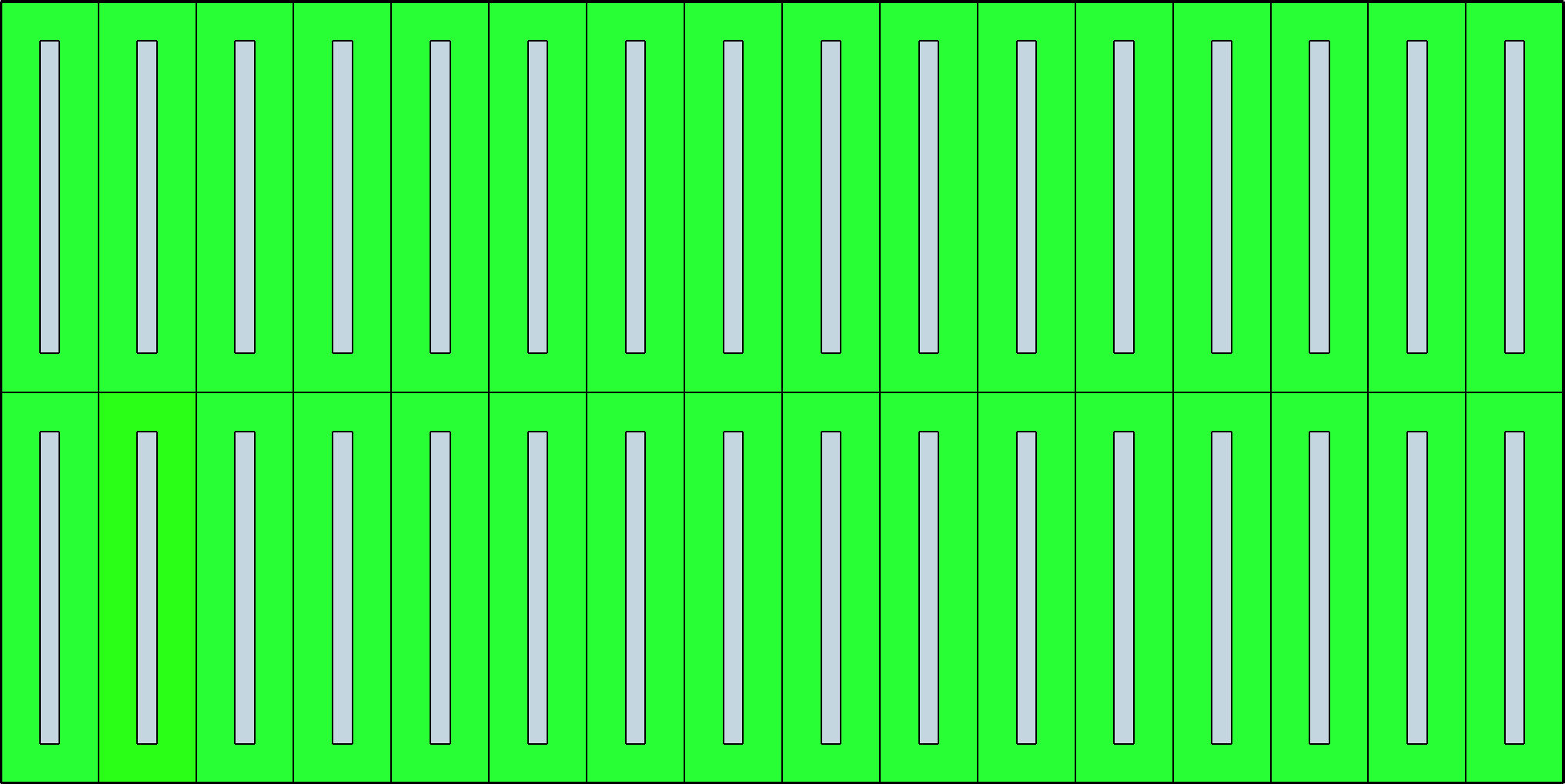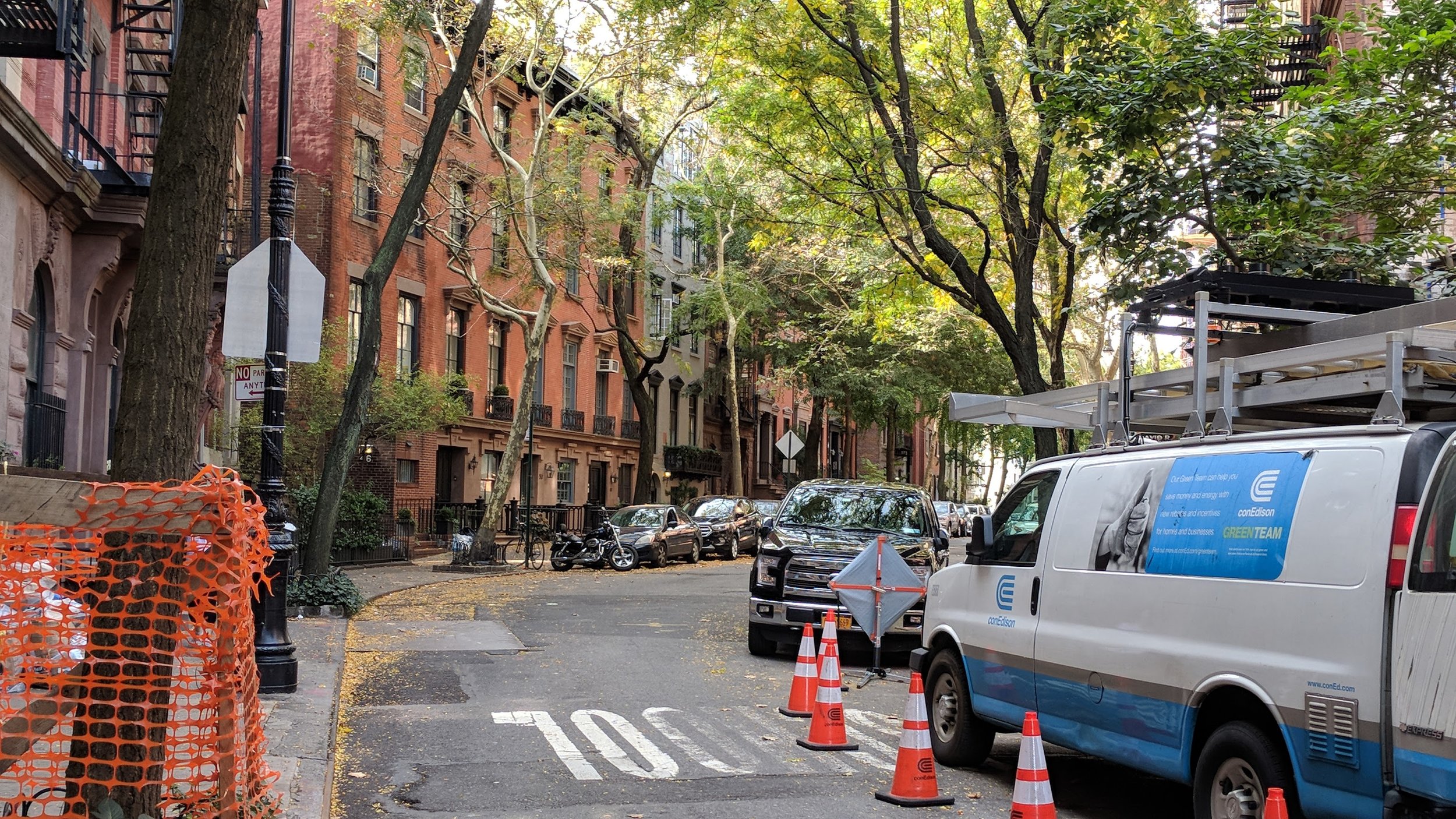The Problem with Setbacks
In the past I have talked about places and non-places. Places are the stuff that is "there" (such as parks, the inside of buildings, streets made for loitering), while non-places are the stuff that is dedicated to "getting there" and other fillers (roads, parking lots, setbacks, greenspace - a negative term I use to describe random strips of grass that are not parks, yards, or gardens.) We should care about this stuff because, as Strong Towns' principles state, land is the base resource from which community prosperity is built and sustained. It must not be squandered. Modern cities tend to dedicate a large percentage of their land to non-places.
I have also talked about the importance of granularity in our development pattern. A fine-grained development pattern diversifies land and property ownership, which:
- fights economic polarization (the growing gap between the haves and have-nots),
- forces good bones (a new property boundary every 40 feet means a door every 40 feet; this makes it much harder to build long blank walls),
- fills a streetscape with many destinations (actually having things within walking distance encourages people to walk),
- makes a place feel more intimate and human-scale,
- is easier to redevelop for the second generation of owners (it is simpler to bulldoze or rehab a small lot than an entire block),
- is less risky (an abandoned or ugly building only ruins a single lot and not the entire block)...
I could go on.
Modern zoning codes often require buildings to be setback from the property boundaries, and this is harmful to our cities because it rewards land consolidation (creating a coarser-grained development pattern) and encourages the creation of non-places to fill the setback with. The smaller your lots are, the greater the percentage of land that must be reserved for the setback.
Let's do the math and show an example. Imagine we have a 400 x 200 foot block with 10 foot set backs. We could plat the block in the following ways:
| Number of lots | Lot size | Buildable area | Buildable percentage | |
|---|---|---|---|---|
| 1 | 80,000 sqft | 68,400 sqft | 85.5% |  |
| 4 | 20,000 sqft | 14,400 sqft | 72% |  |
| 8 | 10,000 sqft | 6,400 sqft | 64% |  |
| 32 | 2,500 sqft | 400 sqft | 16% |  |
We can see that setbacks result in smaller lots having less usable buildable space. Small lots — the main ingredient of fine-grained urbanism — are just silly when 5⁄6 of the land has to sit empty. When land values go up, land is more valuable, so we want to waste less of it. Thus, setbacks motivate us to consolidate land into fewer lots. Pretty quickly we will be incentivized to cover entire blocks in single buildings.
Setbacks are bad economically, but we can also touch on aesthetics. I love the sense of coziness and enclosure that comes from a continuous streetscape without gaps, especially when the streets are slightly crooked with the odd terminating vista to capture the imagination, and perhaps a few street trees to provide a canopy to soften the sunlight. It is the same sense of enclosure and human-scale-ness that you get when you are strolling through a park, following a trail beneath a lush canopy that winds around the trees, wondering if you are going to stumble upon a small surprise such as a waterfall or a stone bridge crossing over a creek.
A streetscape without setbacks in West Village, New York.
A trail winding through New York's Central Park.
Setbacks are not a substitute for building real parks or making our cities environmental sustainable. Setbacks do not make a place safer (modern building codes require fire proof party walls) nor do they do anything for public health (modern sanitation like indoor plumbing and flush toilets have eliminated most historically urban diseases.) Instead, setbacks are bad economically as they force us to consume more land than needed and encourage land consolidation, they break the sense of enclosure on urban streets, and space our built environment out —making us travel farther to get places.
If a homeowner owns a large parcel of land and wants to build a house set back from the property boundary, that should be her call. But, we should not require every building to be set back some arbitrary distance from one another because of all of the negative-side effects discussed above that come with it. Let's get rid of minimum setback requirements.



